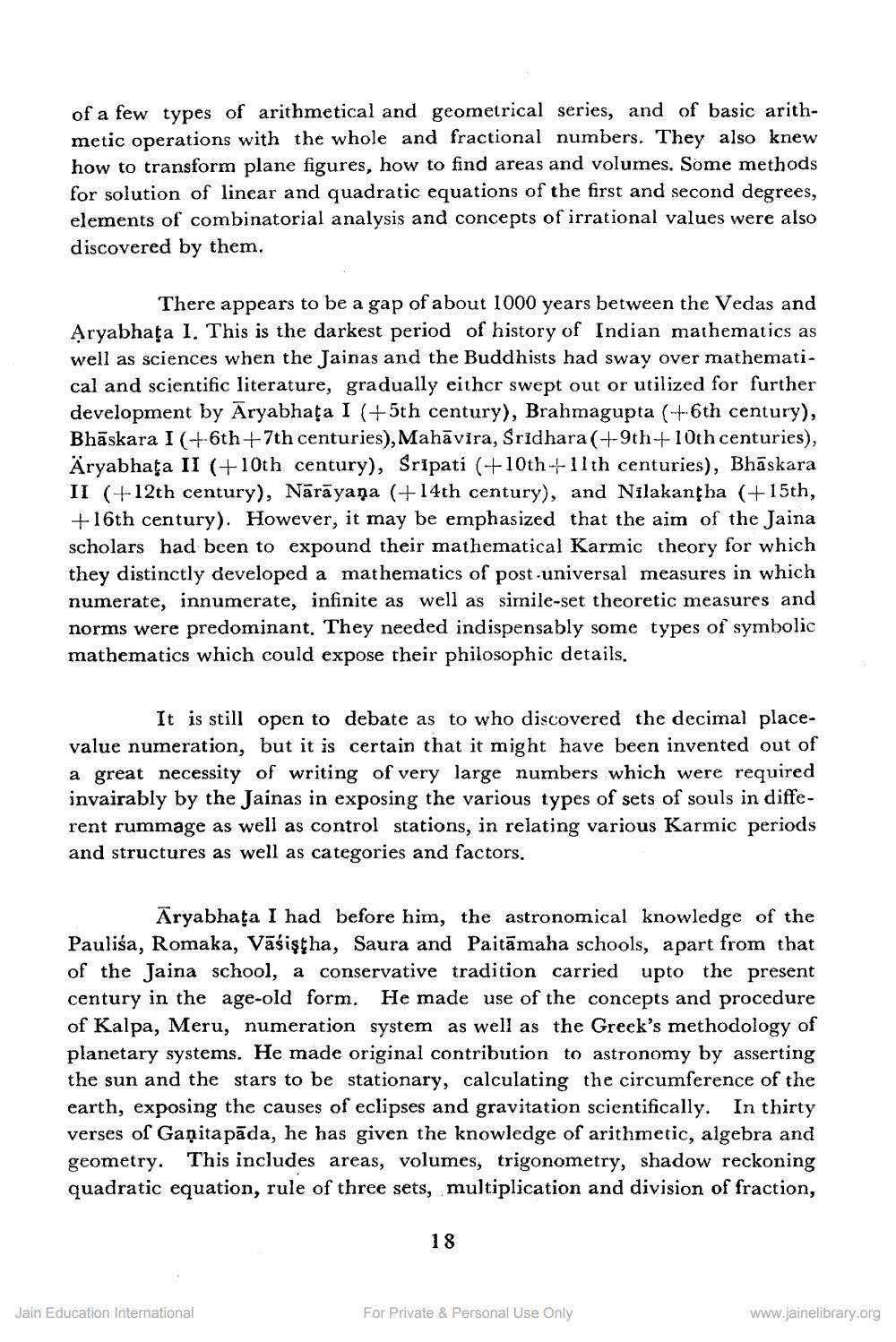________________
of a few types of arithmetical and geometrical series, and of basic arithmetic operations with the whole and fractional numbers. They also knew how to transform plane figures, how to find areas and volumes. Some methods for solution of linear and quadratic equations of the first and second degrees, elements of combinatorial analysis and concepts of irrational values were also discovered by them.
There appears to be a gap of about 1000 years between the Vedas and Aryabhata I. This is the darkest period of history of Indian mathematics as well as sciences when the Jainas and the Buddhists had sway over mathemati. cal and scientific literature, gradually either swept out or utilized for further development by Aryabhata I (+5th century), Brahmagupta (+6th century), Bhāskara I (+6th+7th centuries), Mahāvira, Sridhara (+-9th+10th centuries), Äryabhata II (+10th century), Sripati (+10th 11th centuries), Bhāskara II (+-12th century), Nārāyana (+14th century), and Nilakantha (+15th, +16th century). However, it may be emphasized that the aim of the Jaina scholars had been to expound their mathematical Karmic theory for which they distinctly developed a mathematics of post-universal measures in which numerate, innumerate, infinite as well as simile-set theoretic measures and norms were predominant. They needed indispensably some types of symbolic mathematics which could expose their philosophic details.
It is still open to debate as to who discovered the decimal placevalue numeration, but it is certain that it might have been invented out of a great necessity of writing of very large numbers which were required invairably by the Jainas in exposing the various types of sets of souls in different rummage as well as control stations, in relating various Karmic periods and structures as well as categories and factors.
Aryabhata I had before him, the astronomical knowledge of the Pauliša, Romaka, Vāśiştha, Saura and Paitāmaha schools, apart from that of the Jaina school, a conservative tradition carried upto the present century in the age-old form. He made use of the concepts and procedure of Kalpa, Meru, numeration system as well as the Greek's methodology of planetary systems. He made original contribution to astronomy by asserting the sun and the stars to be stationary, calculating the circumference of the earth, exposing the causes of eclipses and gravitation scientifically. In thirty verses of Gaạita pāda, he has given the knowledge of arithmetic, algebra and geometry. This includes areas, volumes, trigonometry, shadow reckoning quadratic equation, rule of three sets, multiplication and division of fraction,
18
Jain Education International
For Private & Personal Use Only
www.jainelibrary.org




